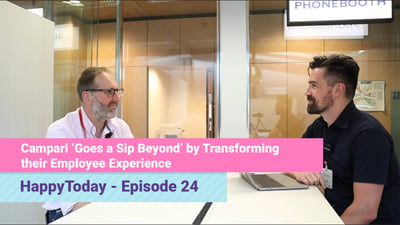Internal Service Desks make employees 22% happier and 47% more productive compared to Outsourced Service Desks, due to something known as the 'Watermelon Effect'. This is where companies are meeting the SLAs (the green of the watermelon) and everything seems fine, when actually employees are still encountering problems (the red).
Companies heavily focus projects on SLAs (service level agreements) which are the main reasons for the 'Watermelon Effect'. Instead, companies need to now focus on implement XLAs (experience level agreements) when measuring IT services.
SLAs focus heavily on completing an objective (i.e. tickets per hour) instead of focusing on the employee experience. If end-users tickets and problems aren’t being solved completely, then this will lead to a negative experience and a negative perception of IT. We explain more about the costs of a service desk ticket in this blog post.
This is due to IT working on attaining the KPI’s or SLAs, which are usually focused on how many tickets they can solve per hour or the amount of time spent on each individual ticket. This kind of metric may appear to be impressive, however they may not be solving the end-users case, leaving the end-user with a negative experience.
And this is where the differences in Internal and Outsourced Service Desks lie, in the metrics or measurement. Internal service desks do not focus on traditional SLAs and focus the experience (using XLAs) of the end-user, how they are solving the ticket and focusing on delivering a good service.
On the other hand, when you outsource your Service Desk, you need to have contracts in place. Within the contracts is what is getting measured, and that focuses on what is getting done (SLAs). It is much harder to measure the whole service experience, so instead, targets are set for you first line service desk, which are only responsible for some cases.
As well as this, from an agents perspective, there are sanctions in place that will impact the agent. If they do not achieve these stated metrics then there will be liability against them for not meeting the terms in the contract, for example paying back €50k.
Furthermore, if you have set an objective for your agent to complete 20 cases per hour, then you are effectively measuring how fast an agent is getting rid of their customers, which also leads to a decline in happiness for the agent.
“Lets stop the SLA games”
However, XLAs are only part of the solution. XLAs are made to increase happiness and productivity, as well as building cooperation and trust. In order to make your outsourced Service Desk better than an internal Service Desk, you need to work together to have a common team with common targets. Not trying to push the cost per sale on the vendor and try to make them take all the responsibility for everything.
XLAs, however, are complicated and there is not a one set answer to match all needs. But there are examples and cases out there showing that it can be done. In our previous episodes we covered a case on Wilhelmsen, who are constantly working with their outsourced vendor. As well as this, RB from the UK who also use an outsourced vendor, set their target solely on improving happiness for their employees and saw a huge improvement in monthly scores.
The basics of creating XLAs are very very simple – it is about measuring the experience and not focusing on the factual stuff that happened within the tool, such as time per ticket. However the challenging part is getting rid of the controlling feeling with agreements.
Data of this episode has been taken from the 'Happiness Score™ Report'. Download your copy of the Happiness Score™ Report.



